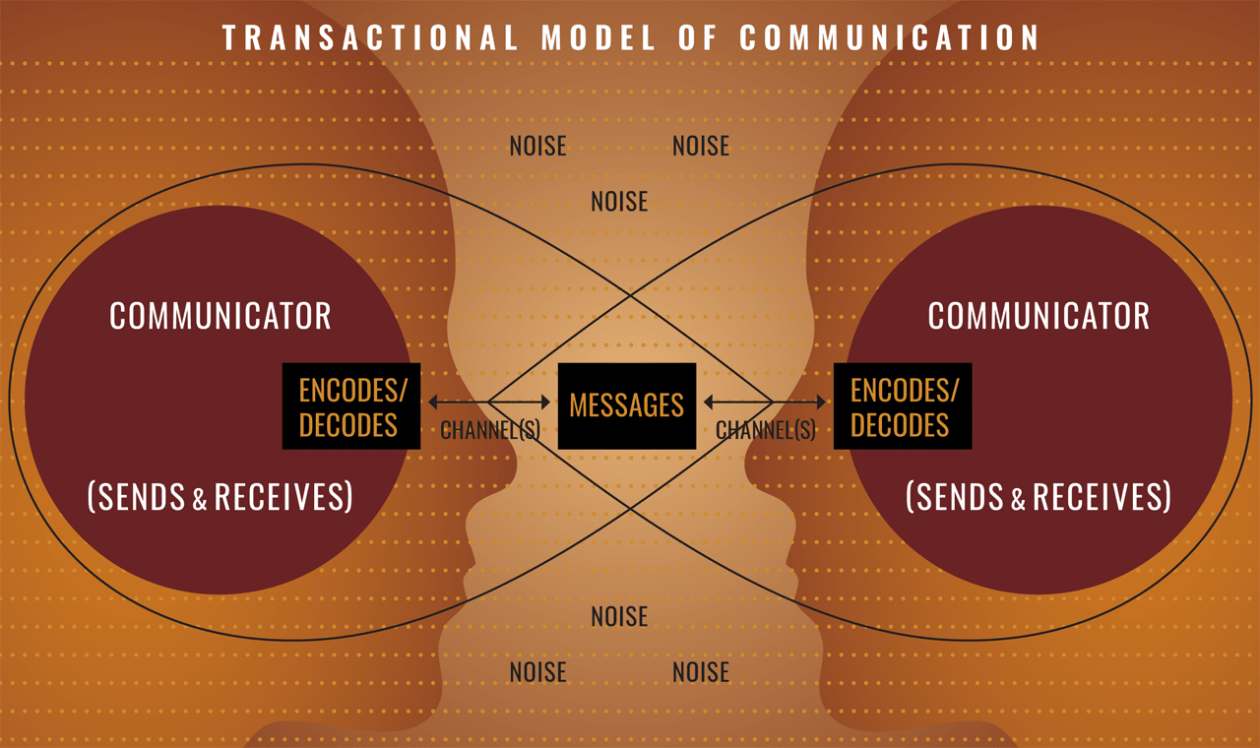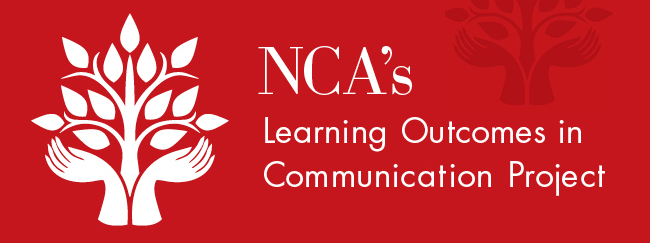
At its foundation, Communication focuses on how people use messages to generate meanings within and across various contexts, and is the discipline that studies all forms, modes, media, and consequences of communication through humanistic, social scientific, and aesthetic inquiry.
In November 1914, on an unseasonably warm Chicago day, 17 Speech teachers voted to formally sever ties with the National Council of Teachers of English and form their own association, the National Association of Academic Teachers of Public Speaking (now NCA). In so doing, these teachers declared that the study and teaching of Communication was distinct from other disciplines, deserving of its own institutional and intellectual legitimacy as a discipline within the context of American higher education. Over the next century, this vision flourished; Communication is now firmly established as a course of both undergraduate and graduate study in colleges and universities across the United States and around the world. At its foundation, Communication focuses on how people use messages to generate meanings within and across various contexts, and is the discipline that studies all forms, modes, media, and consequences of communication through humanistic, social scientific, and aesthetic inquiry.
The academic study of Communication dates back centuries. For the ancients, Communication was the study of rhetoric—the art of persuading others through public speaking and oratory; they believed that understanding rhetoric was critical for every citizen’s education. As the ancient Greek rhetorician Isocrates wrote in his famous Antidosis, “Because there has been implanted in us the power to persuade each other and to make clear to each other whatever we desire, not only have we escaped the life of wild beasts, but we have come together and founded cities and made laws and invented arts; and, generally speaking, there is no institution devised by man which the power of speech has not helped us to establish.” Throughout many centuries of rhetorical study as a liberal art, Isocrates’ words have served as an enduring reminder of the power of communication, and the contemporary academic discipline of Communication continues to promote its effective and ethical practice.
The classical study of rhetoric as a liberal art migrated to U.S. colleges and universities; Harvard University has long had an endowed chair in rhetoric and oratory (the Boylston Chair), for example, and one of the first professors in that position, John Quincy Adams, authored a two-volume collection of Lectures on Rhetoric and Oratory in 1810. The development of the Communication discipline in the United States owes much to this classical tradition. The mid-20th century expansion and evolution of the discipline, furthermore, owes much to the emergent interest in the social sciences that flowered in the post-World War II period. Perplexed by the power of communication to move entire populations toward fascism and violence in Europe and Asia, Communication scholars turned to social scientific methods as a means to understand audiences and message effects. As the research focus of some Communication scholars shifted, so, too, did the curriculum in many Communication departments. Joining the courses in Public Speaking, British and American Public Address, Rhetorical Theory, Radio Speaking, and the like were new offerings in Interpersonal Communication, Mass Communication Effects, and Persuasion and Social Influence. Along with studies of great orators and their rhetoric, graduate students began producing dissertations that experimentally tested the power and reach of mass-mediated communication and that surveyed large audiences for their attitudes toward political communication, for example.
Amidst all of these disciplinary and scholarly changes, Communication scholars and teachers retained their appreciation for the role and influence of communication across all aspects of public and private life. They continue to embrace the ubiquity of communication and are mindful of the inherent value of communication to meaningful citizenship. Emerging from the democratic impulse embodied in 19th- and 20th-century progressivism, this is the pedagogical foundation of the discipline.
Communication cuts across contexts and situations; it is the relational and collaborative force that strategically constructs the social world. Knowledge and understanding of communication and strong communication skills allow people to create and maintain interpersonal relationships; employers in all sectors seek employees with strong communication skills; and society needs effective communicators to support productive civic activity in communities.

The Learning Outcomes in Communication (LOCs) are meant to stimulate meaningful conversations among faculty members about enhancing curricular development in the interest of improving student learning. They are a starting point for conversations; they are not exhaustive or prescriptive. They are designed to be adapted by individual departments and programs based on their particular imperatives and areas of focus, and they are adaptable to different expectations for level of accomplishment at different degree levels. The LOCs are a foundation for effective assessment of student learning.
A central assumption at the foundation of these Learning Outcomes in Communication is that Communication constructs the social world and is relational, collaborative, strategic, symbolic, and adaptive.
- Explain the origins of the Communication discipline
- Summarize the broad nature of the Communication discipline
- Categorize the various career pathways for students of Communication
- Articulate the importance of communication expertise in career development and civic engagement
- Examine contemporary debates within the field
- Distinguish the Communication discipline from related areas of study
- Identify with intellectual specialization(s) in the Communication discipline
- Explain Communication theories, perspectives, principles, and concepts
- Synthesize Communication theories, perspectives, principles, and concepts
- Apply Communication theories, perspectives, principles, and concepts
- Critique Communication theories, perspectives, principles, and concepts
- Interpret Communication scholarship
- Evaluate Communication scholarship
- Apply Communication scholarship
- Formulate questions appropriate for Communication scholarship
- Engage in Communication scholarship using the research traditions of the discipline
- Differentiate between various approaches to the study of Communication
- Contribute to scholarly conversations appropriate to the purpose of inquiry
- Locate and use information relevant to the goals, audiences, purposes and contexts
- Select creative and appropriate modalities and technologies to accomplish communicative goals
- Adapt messages to the diverse needs of individuals, groups and contexts
- Present messages in multiple communication modalities and contexts
- Adjust messages while in the process of communicating
- Critically reflect on one’s own messages after the communication event
- Identify meanings embedded in messages
- Articulate characteristics of mediated and non-mediated messages
- Recognize the influence of messages
- Engage in active listening
- Enact mindful responding to messages
- Identify contexts, situations and barriers that impede communication self-efficacy
- Perform verbal and nonverbal communication behaviors that illustrate self-efficacy
- Articulate personal beliefs about abilities to accomplish communication goals
- Evaluate personal communication strengths and weaknesses
- Identify ethical perspectives
- Explain the relevance of various ethical perspectives
- Articulate the ethical dimensions of a communication situation
- Choose to communicate with ethical intention
- Propose solutions for (un)ethical communication
- Evaluate the ethical elements of a communication situation
- Articulate the connection between communication and culture
- Recognize individual and cultural similarities and differences
- Appreciate individual and cultural similarities and differences
- Respect diverse perspectives and the ways they influence communication
- Articulate one’s own cultural standpoint and how it affects communication and world view
- Demonstrate the ability to be culturally self-aware
- Adapt one’s communication in diverse cultural contexts
- Explain the importance of communication in civic life
- Identify the challenges facing communities and the role of communication in resolving those challenges
- Frame local, national and/or global issues from a Communication perspective
- Evaluate local, national and/or global issues from a Communication perspective
- Utilize communication to respond to issues at the local, national, and/or global level
- Advocate a course of action to address local, national and/or global issues from a Communication perspective
- Empower individuals to promote human rights, human dignity and human freedom
One of the defining features of the discipline of Communication is that it has many areas of specialization. That means a major in Communication can often be tailored to a student’s interests, strengths, and ambitions through “concentrations” or “tracks.” While areas of emphasis differ from one school to another, the list below describes some of the most common areas of Communication study. In addition to the specializations below, NCA's Interest Groups represent many more areas of study.
Applied Communication – How Communication theory and research can be useful and relevant in addressing practical problems. Example: How can emergency management personnel best communicate severe weather warnings to affected populations?
Communication Education – How communication theory and practice can inform effective instruction and learning in the classroom and other pedagogical contexts. Example: How can teachers establish credibility with students?
Electronic & Digital Media – How people make use of different forms of media to communicate with audiences. Example: How are news reports produced and disseminated via social media?
Health Communication – How people communicate in different health care contexts. Example: How should doctors communicate with patients to increase the likelihood of adherence to prescribed medication protocols?
International & Intercultural Communication – How people communicate across national and international boundaries and different cultural backgrounds. Example: How can diplomats from different countries most effectively negotiate with one another in a manner that is sensitive to the other’s cultural norms?
Interpersonal Communication – How pairs of people communicate in personal relationships. Example: Why does father-daughter communication differ from mother-daughter communication?
Legal Communication – How communication organizes and creates meaning in courtrooms and other legal contexts. Example: What should defense attorneys do to effectively persuade juries of their clients’ innocence in closing statements?
Mass Communication & Media Literacy – How mass forms of communication, such as print, radio, and television, create meaning for audiences. Example: How does watching Grey’s Anatomy on television affect viewers’ interactions with their health care providers?
Mediation and Dispute Resolution – How conflict is understood, managed, and resolved via different types of communication interactions. Example: How can the competing claims and arguments of opposing parties in negotiations over labor contracts be resolved?
Organizational Communication – How people communicate in different organizational contexts. Example: How can suggestion boxes in employee lounge areas encourage positive feelings about an organization?
Performance Studies – How performers, audiences, texts, and contexts interact in popular entertainment and other forms of public performance. Example: How do different types of Latino/a performance art redefine citizenship and political participation in U.S. states that border Mexico?
Political Communication – How we can explain the communicative activity of citizens, individual political figures, governmental institutions, the media, political campaigns, advocacy groups, and social movements. Example: Are protestors effective at influencing public policy?
Public Address – How speakers have persuaded audiences and shaped social and political ideas in their specific historical contexts via public oratory. Example: How did Abraham Lincoln’s pre-presidential oratory shape public and social understandings of abolition and antebellum politics?
Public Relations – How relationships between an organization and its various publics are managed. Example: How can non-profit organizations most effectively use public service announcements to recruit volunteers?
Rhetorical Criticism – How rhetoric is defined, classified, analyzed, interpreted, and evaluated. Example: How can audiences interpret and evaluate the most relevant and important characteristics of the U.S. President’s most recent State of the Union address?
Small Group Communication – How groups of three or more individuals interact around a common purpose and influence one another. Example: How does a 10-member citizens’ advisory group for a local food co-op reach a decision about whether to sell beer and wine?
Visual Communication – How people communicate using visual data, such as through architecture, photography, film, or visual art. Example: Why has the iconic photograph of World War II soldiers raising a U.S. flag on the island of Iwo Jima been used so frequently by multiple generations?

